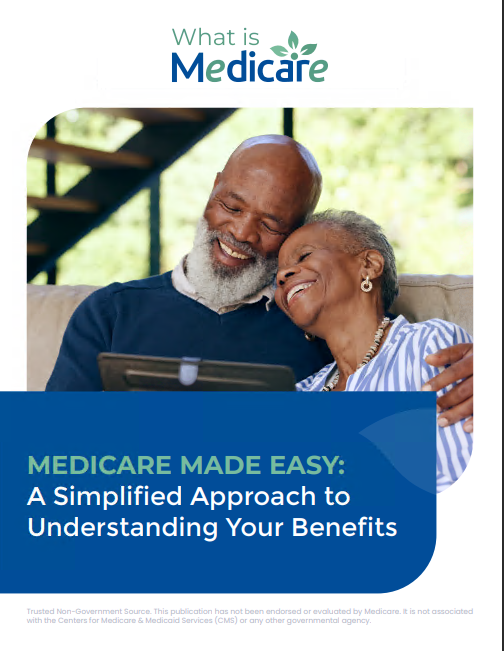Key Takeaways:
- Understanding Medicare eligibility criteria and enrollment processes is essential for ensuring timely and effective healthcare coverage.
- Regularly reviewing your eligibility and enrollment options can help you avoid penalties and gaps in coverage.
Eligibility Requirements for Medicare in 2024: Who Can Join and How
Medicare is a federal health insurance program primarily for people aged 65 and older, but it also covers certain younger individuals with disabilities or specific medical conditions. Understanding the eligibility requirements and enrollment procedures is crucial to maximize your Medicare benefits. This guide provides a detailed overview of who qualifies for Medicare in 2024 and how to enroll.
Overview of Medicare Eligibility Criteria
Medicare eligibility is determined by several factors, including age, employment history, disability status, and specific medical conditions. Here are the main eligibility criteria:
- Age: Most people become eligible for Medicare at age 65.
- Disability: Individuals under 65 can qualify if they have received Social Security Disability Insurance (SSDI) for 24 months.
- Medical Conditions: Those with End-Stage Renal Disease (ESRD) requiring dialysis or a kidney transplant, or Amyotrophic Lateral Sclerosis (ALS), qualify immediately upon receiving SSDI.
To be eligible for premium-free Part A (hospital insurance), you or your spouse must have worked and paid Medicare taxes for at least 10 years (40 quarters). If you do not meet this requirement, you can still buy Part A by paying a monthly premium.
Understanding Age and Disability Requirements for Medicare
Age-Based Eligibility
Individuals become eligible for Medicare at age 65. If you are already receiving Social Security benefits, you will be automatically enrolled in Medicare Parts A and B. If not, you will need to sign up during your Initial Enrollment Period (IEP).
Disability-Based Eligibility
Younger individuals can qualify for Medicare if they receive SSDI. The eligibility begins after receiving SSDI benefits for 24 months. For those with ALS, Medicare starts immediately upon receiving SSDI benefits. Individuals with ESRD are eligible if they meet specific criteria related to dialysis treatment or kidney transplants.
Premium-Free Part A
To qualify for premium-free Part A, you must meet the work requirement of 40 quarters. If you do not qualify, you can purchase Part A. In 2024, the standard Part A premium is $505 per month, but it is reduced to $278 per month if you have 30-39 quarters of coverage.
How to Enroll in Medicare: Step-by-Step Guide
Initial Enrollment Period (IEP)
The Initial Enrollment Period is a seven-month window that begins three months before your 65th birthday, includes the month you turn 65, and ends three months after. Enroll in Medicare Parts A and B during this period to avoid penalties.
General Enrollment Period (GEP)
If you miss your IEP, you can enroll during the General Enrollment Period, which runs from January 1 to March 31 each year. Coverage starts on July 1 of that year, but late enrollment penalties may apply.
Special Enrollment Period (SEP)
You may qualify for a Special Enrollment Period if you are covered under an employer’s group health plan. This period allows you to enroll in Medicare without penalties when your employment or coverage ends. The SEP typically lasts for eight months after the end of employment or group health coverage.
Step-by-Step Enrollment Process
- Determine Eligibility: Verify your eligibility based on age, disability, or specific medical conditions.
- Gather Documentation: Collect necessary documents, such as proof of age, citizenship, and employment history.
- Apply Online or In Person: You can apply for Medicare online through the Social Security Administration website, by phone, or in person at your local Social Security office.
- Choose Your Coverage: Decide whether to enroll in Original Medicare (Parts A and B), Medicare Advantage (Part C), and/or Prescription Drug Plan (Part D).
Special Enrollment Periods and Exceptions
Special Enrollment Periods provide opportunities to sign up for Medicare without penalties under certain circumstances:
Working Past Age 65
If you or your spouse are still working and covered by an employer’s group health plan, you can delay enrolling in Medicare without penalties. You have an eight-month SEP after employment ends to sign up for Medicare Parts A and B.
Moving Out of Your Plan’s Service Area
If you move out of your Medicare Advantage or Part D plan’s service area, you qualify for an SEP to enroll in a new plan without penalties.
Other Special Circumstances
Certain life events, such as losing other health insurance coverage or changes in your financial status, may also trigger an SEP. It’s essential to understand these situations to avoid penalties and ensure continuous coverage.
Medicare Part A, B, C, and D: Eligibility and Enrollment Details
Medicare Part A (Hospital Insurance)
Covers inpatient hospital stays, care in a skilled nursing facility, hospice care, and some home health care. Most people qualify for premium-free Part A, but those who do not can purchase it.
Medicare Part B (Medical Insurance)
Covers outpatient care, doctor’s services, preventive services, and medical supplies. Part B requires a monthly premium, which varies based on income. Enrollment in Part B is crucial to avoid penalties unless you have other creditable coverage.
Medicare Part C (Medicare Advantage)
Medicare Advantage plans are offered by private insurance companies and provide an alternative to Original Medicare. These plans include all Part A and Part B benefits and often additional benefits like prescription drug coverage, dental, and vision. Eligibility requires enrollment in both Part A and Part B.
Medicare Part D (Prescription Drug Coverage)
Part D plans help cover the cost of prescription drugs and are offered by private insurers. To enroll, you must have Medicare Part A and/or Part B. Selecting a plan that covers your medications is crucial for managing drug costs effectively.
Conclusion
Understanding Medicare eligibility requirements and enrollment processes is vital for ensuring comprehensive healthcare coverage. By familiarizing yourself with the criteria for age, disability, and medical conditions, and by enrolling during the appropriate periods, you can avoid penalties and gaps in coverage. Regularly reviewing your Medicare options and staying informed about changes will help you maintain effective and affordable healthcare coverage in 2024.
Contact Information:
Email: [email protected]
Phone: 4055551234










